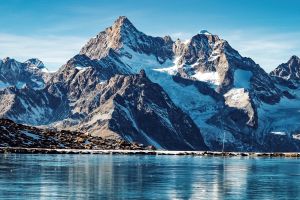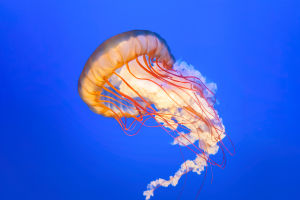Mount FujiI is the highest mountain in Japan. It rises to 12,388 feet (3,776 metres) near the Pacific Ocean coast in Yamanashi and Shizuoka ken (prefectures) of central Honshu, about 60 miles (100 km) west of the Tokyo-Yokohama metropolitan area.
Mount Fuji is Japan's most famous mountain, its iconic shape present in the country's art, currency, and even pop culture. But while you might be familiar with Mount Fuji, how much do you really know about it?Here are some intresting facts about Mount Fuji.
1. It is three volcanoes in one
It might look like it’s just one giant mountain, but Mount Fuji is actually made up of three separate volcanoes: Komitake at the bottom, Kofuji in the middle and Fuji at the top, which is the youngest of the three.
2. It is a symbol of Japan
Mount Fuji has long been one of Japan’s famous iconic symbols, contributing to the country’s cultural and spiritual geography. Over the years the peak has evolved from an object of worship to a source of artistic inspiration, having featured in poetry, literature and countless art prints.
3. It is an active volcano
While it may be a site of serene and sacred beauty, Mount Fuji is actually an active volcano which sits on a triple junction of tectonic activity, where the Amurian, Okhotsk and Philippine plates meet.
4. It last erupted in 1707
Despite being an active volcano, Mount Fuji hasn’t erupted since 1707, when it erupted for two weeks. This caused ash to fall on its neighbouring cities in Tokyo and formed a new crater and peak on its south-eastern side.
5. It is surrounded by five beautiful lakes
The base of Mount Fuji is surrounded by five stunning lakes which sit around 1,000 feet above sea level and offer spectacular views of the mountain.
The lakes area has become a popular spot among tourists thanks to their unrivalled setting. Due to the geothermal activity in the area, there are hot springs to bathe in – perfect for easing those aches and pains after a long day’s climbing.
In addition to the above interesting facts, the reason why Mount Fuji is one of the most unique peaks in the world is also related to its own special geographical features.
1.Characteristic Geology
Mt. Fuji has a stratovolcanic structure resulting from sequences over vivacious volcanic activity which created multiple layers of lava and volcanic projectiles. This volcanic ejecta is made of basaltic rock, setting it apart from the more common andesite volcanoes of Japan.
2.Precious Geological Phenomena
Basaltic lava has a low viscosity and thus flows more freely, spreading out over a wide area, giving rise to various special land formations such as lava caves and lava trees.
3.Lava Caves And Lava Trees
Lava caves can be formed when lava flows begin to harden. The slower to harden core may continue to flow and hollow out the area inside, else, gas ejections can create an empty region within the hardened exterior. One can see the stages of cooling and hardening from the initial nearly 1000℃ hot lava flow.
Lava trees are created when lava flows around trees, which the burn leaving hollowed out regions in the lava according to their shape. These can tell us how the forest looks at the time of eruption, as well as the direction the lava flowed.
4.Osawa Valley
Mt. Fuji had more or less than same shape as today and was a young, new volcano as of about 10 thousand years ago. However, rain, wind and snow have been slowly causing erosion and creating valleys along its surface. The largest of these is the Osawa Valley, situated directly below the summit on the west side of the mountain, which began to be formed about 1000 years ago.
The east side of Mt. Fuji has been frequently covered in ash due to eruptions over the years, yet very little has landed on the west side. It is thought that this is reason for this large valley.


